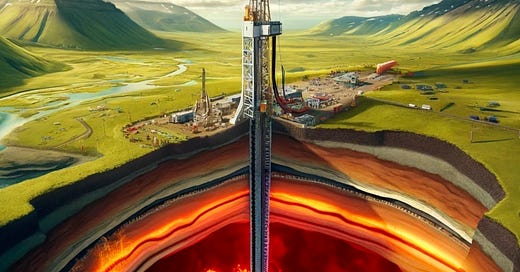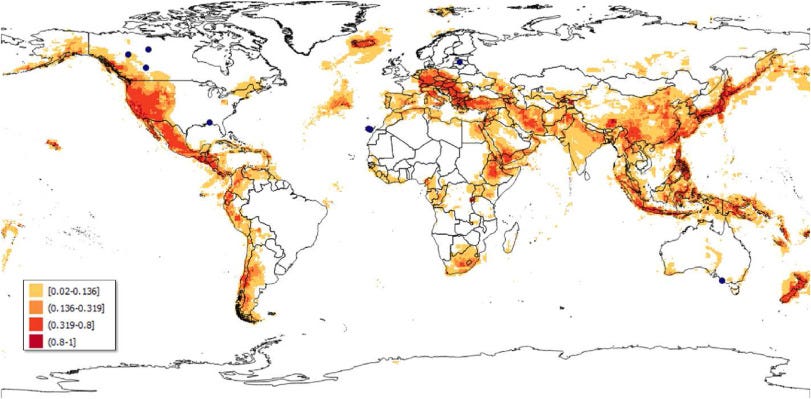"Geothermal power is the sleeping giant of renewable energy." – Bill Gates
Provided by NewAtlas
Beneath our feet, a virtually untapped energy source lies waiting to be harnessed—geothermal heat. While certain parts of the world are fortunate enough to have hot springs and volcanoes that make geothermal energy more accessible, most of the planet's geothermal potential remains locked far beneath the surface. This hidden treasure sits under miles of rock, just beyond our reach. The true challenge, however, isn’t the energy itself—it’s accessing it.
In places like Iceland, the gift of geothermal energy is readily available, where volcanoes and natural hot springs pepper the landscape. The country has successfully tapped into this subterranean power, using it to provide heating and electricity. With 85% of Iceland’s homes relying on geothermal energy for warmth and 25% of its electricity generated by geothermal power stations, Iceland has mastered geothermal technology. Their model is proof of geothermal energy’s vast potential and its ability to transform a nation’s energy landscape.
But while Iceland’s geothermal success is impressive, the rest of the world hasn’t quite caught up. The appeal of geothermal energy is clear. It is an almost boundless, “always-on” source of power. Unlike intermittent renewables like wind and solar, geothermal energy is consistent, continuously generated by the Earth’s molten core and the natural decay of radioactive elements in its crust. The amount of energy the Earth releases annually simply as it cools could easily meet global energy demands multiple times over. Yet, harnessing this power on a large scale requires overcoming significant technological and economic challenges.
Currently, only 32 countries operate geothermal power plants, producing just 97 Terawatt hours (TWh) of electricity in 2023. To put that into perspective, the United States alone generates more electricity from solar energy each year. While geothermal energy is believed to have the potential to provide between 800 and 1,400 TWh of electricity annually by 2050, this remains a distant goal. The challenge lies in scaling geothermal power production from niche projects to widespread global adoption.
Provided by Science Direct
The key issue is geography. In Iceland, geothermal energy is easily accessed because it’s located close to the Earth’s surface. Some geothermal wells there only need to be drilled to a depth of 2.5 kilometers to reach temperatures of up to 350°C. However, for most of the world, the geothermal heat lies much deeper. Temperatures increase by approximately 25-30°C every kilometer you descend into the Earth’s crust. At 5 km, the temperature might reach 140°C, and at 10 km, it could exceed 374°C, which is the point where water becomes supercritical—a state in which it can hold significantly more energy than in its normal liquid form.
Supercritical fluids offer a tantalizing promise for geothermal energy production. They can yield up to ten times the energy of today’s commercial geothermal wells. But this presents another hurdle: traditional rotary drills simply aren’t capable of handling the extreme conditions required to access superheated reservoirs. Drill bits and other components often fail when subjected to the high pressure and temperature found at these depths. A notable example of this failure occurred in 2009 during the Iceland Deep Drilling Project, where the team accidentally tapped into supercritical conditions, resulting in uncontrollable, highly acidic steam that led to a two-year struggle to seal the well.
Drilling deep enough to tap into this vast energy source isn’t just a matter of overcoming technological hurdles—it’s prohibitively expensive. The cost of drilling a 1-kilometer well is around $2 million, and drilling to four times that depth could push costs to between $6 million and $10 million. The most ambitious drilling project in history, the Soviet Kola Superdeep Borehole, reached a depth of 12.2 kilometers in the Arctic Circle, but the effort took nearly 20 years and remains the deepest hole ever drilled.
Keep reading with a 7-day free trial
Subscribe to The Monetary Skeptic to keep reading this post and get 7 days of free access to the full post archives.





